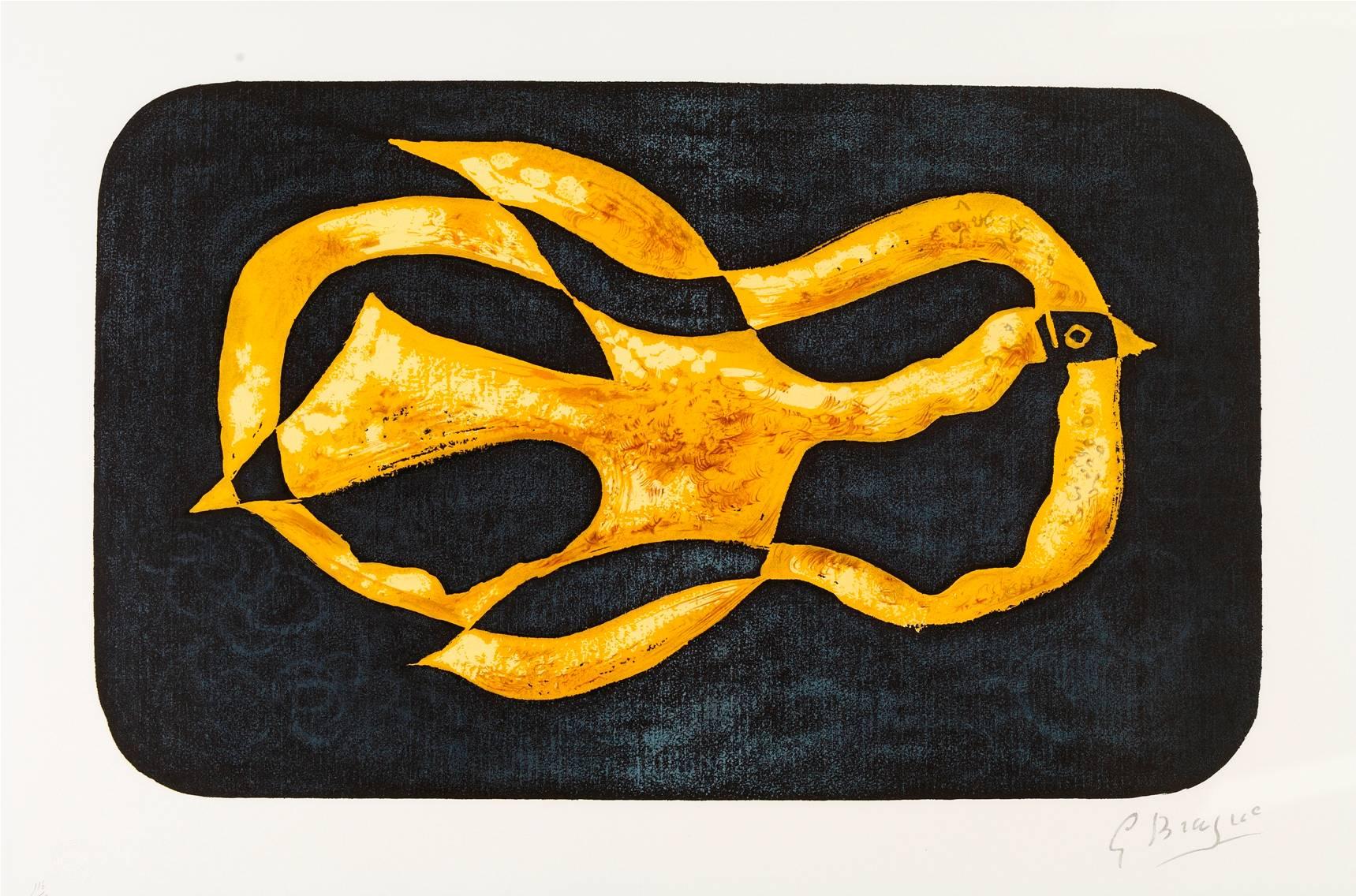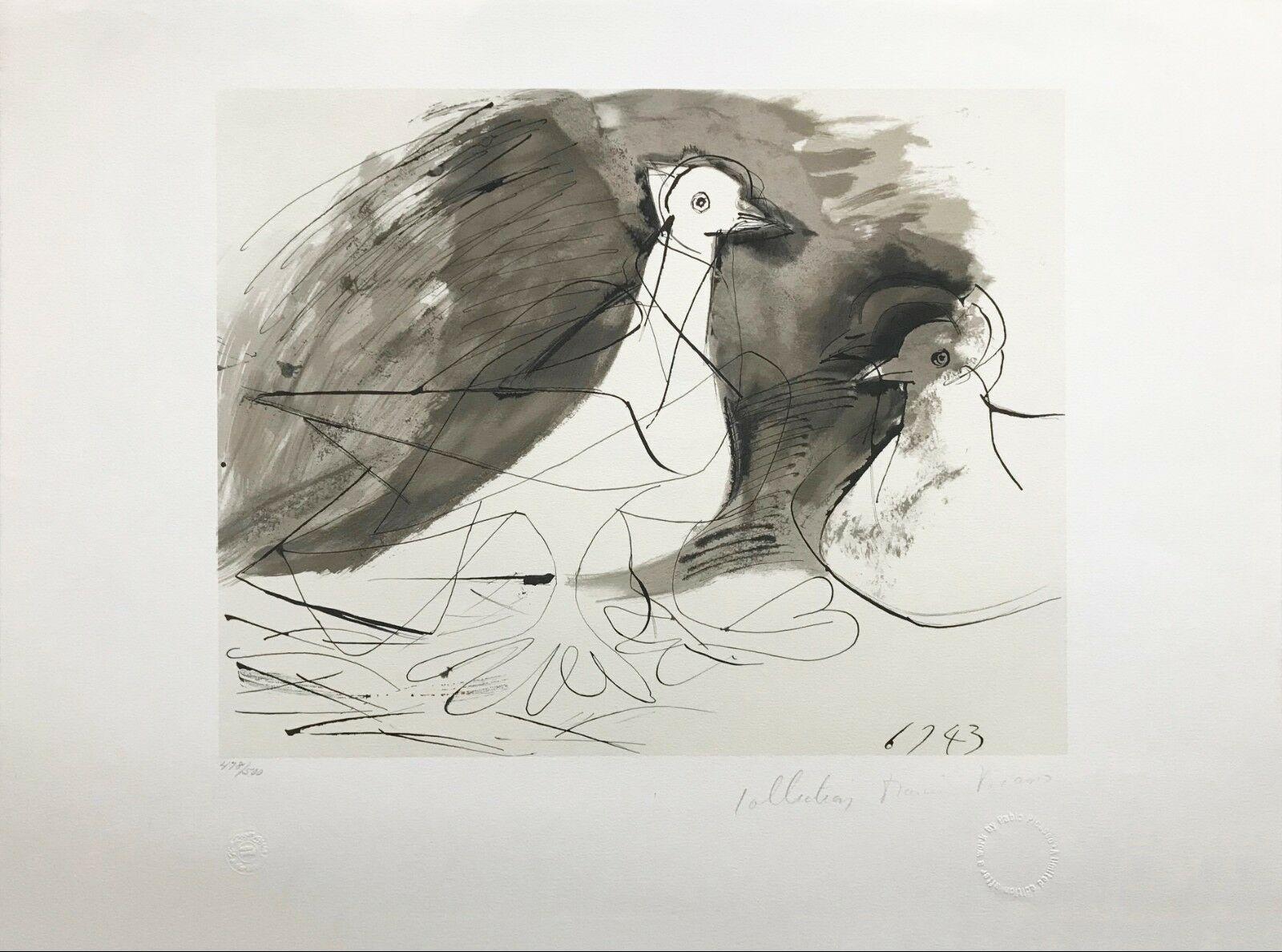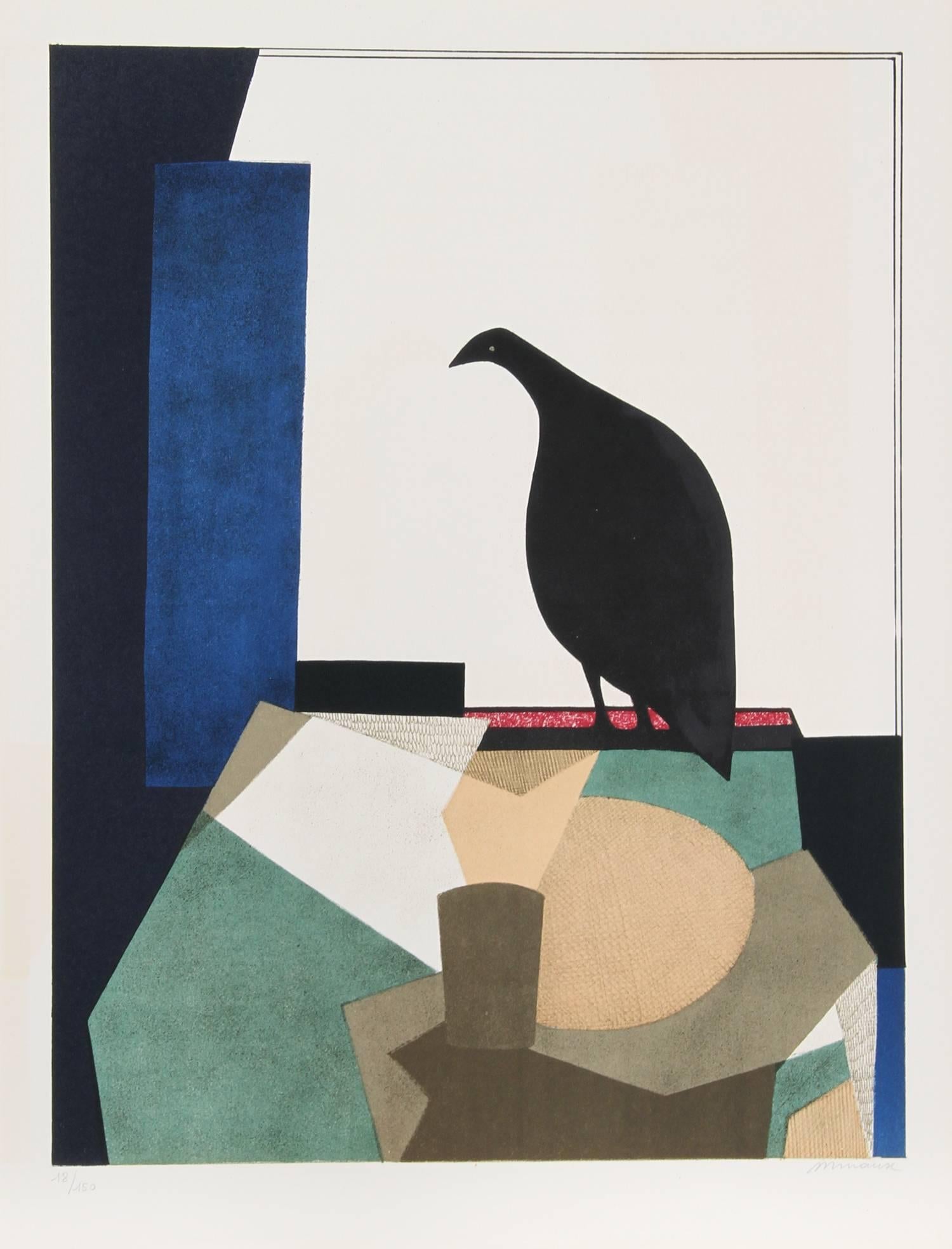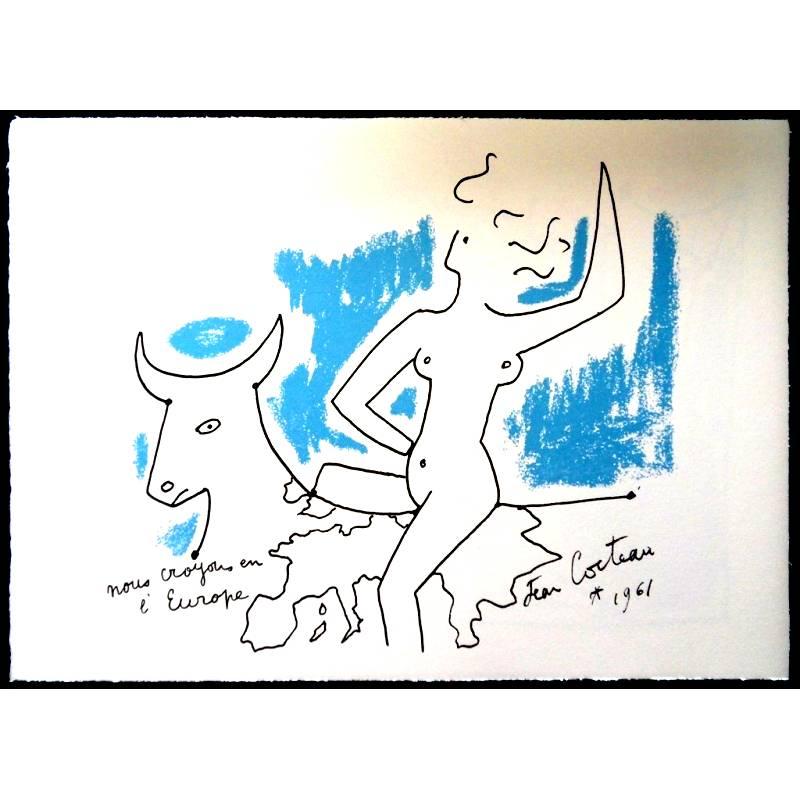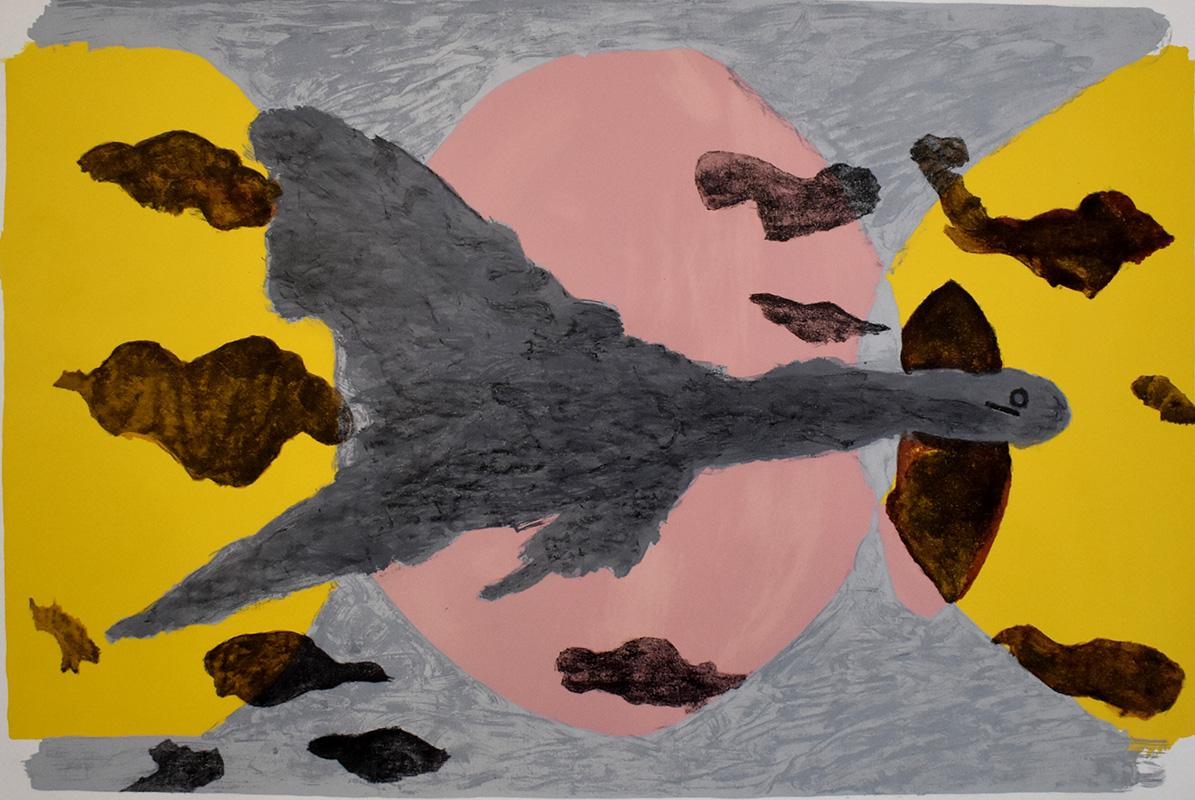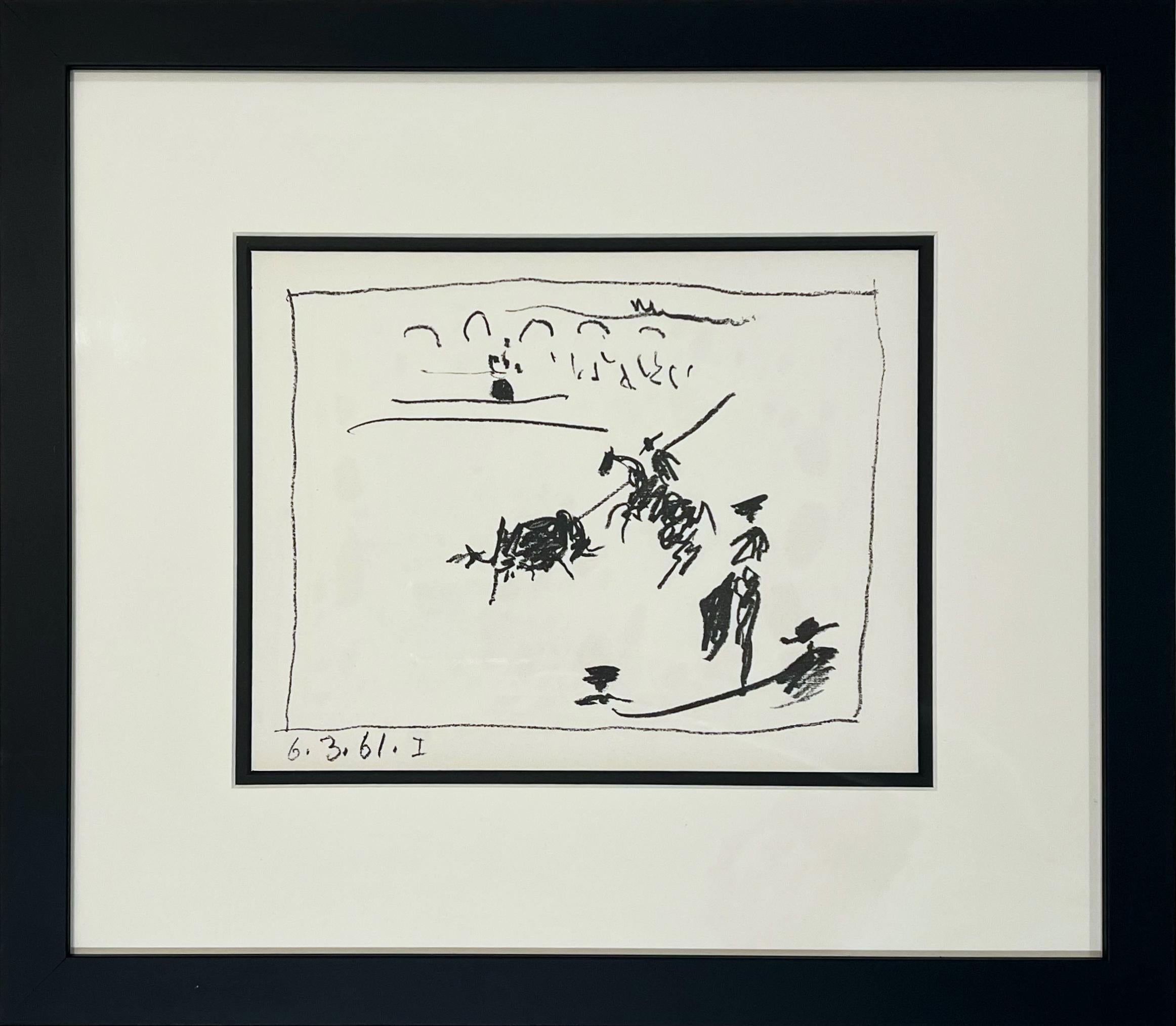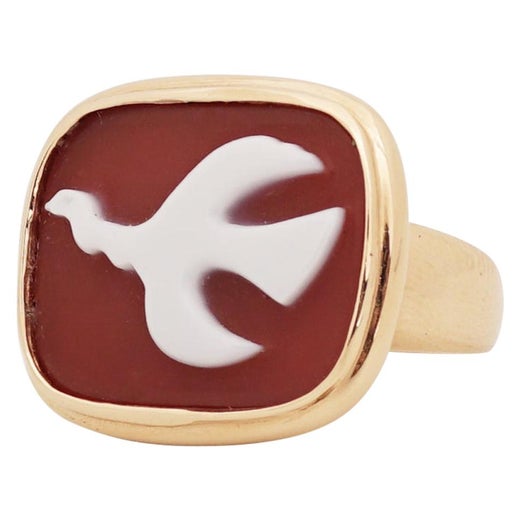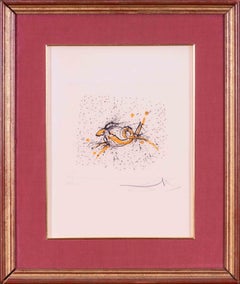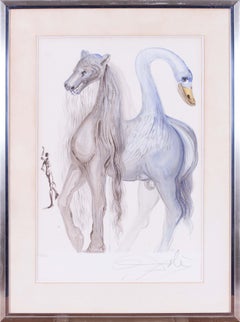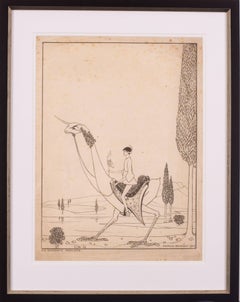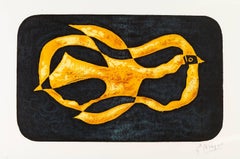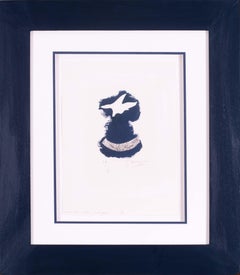
Georges Braque signed and numbered lithograph, 1960 'Le Tir a l'Arc'
View Similar Items
Georges BraqueGeorges Braque signed and numbered lithograph, 1960 'Le Tir a l'Arc'1960
1960
About the Item
- Creator:Georges Braque (1882 - 1963, French)
- Creation Year:1960
- Dimensions:Height: 15 in (38.1 cm)Width: 11 in (27.94 cm)Depth: 1 in (2.54 cm)
- Medium:
- Movement & Style:
- Period:
- Condition:Overall very good condition Float mounted Possible fault or mark upper right in a small v-shape Raised double mount Behind glass In a silvered ornate composite frame.
- Gallery Location:Petworth, GB
- Reference Number:1stDibs: LU540313713232
Georges Braque
Georges Braque was born in Argenteuil, France, in 1882. Braque lived much of his childhood and young adult life in Le Havre. He attended night classes at the art school from 1897–99 and then moved to Paris, where he obtained his license as a master decorator. From 1905–06, after studying at École des Beaux-Arts in Paris and having been influenced by the works of Henri Matisse, he began to paint in the way of Fauvism by using bright colors and taking advantage of the freedom of the composition. Paysage à L'Estaque (1906) was one of the prominent works of art made at this time.
The year 1907 was a significant time in Braque's development, wherein he visited the retrospective on Paul Cézanne and he came into contact with Picasso, who was very engrossed in the realization of Les Demoiselles d'Avignon at the time. At this point, Braque began nurturing a considerable interest in primitive art. After the First World War, Braque worked autonomously and developed a more personal style, which was characterized by vivid colors and textured surfaces. Braque painted still life, interior views, and ocean scenes. The Ateliers (1948–55) and Birds (1955–63) series were painted during this period. In 1948, he obtained his first award for painting at the XXIV Biennial in Venice.
- Salvador Dali signed lithograph 'Capricorn from the Zodiac II', 1975, `68/250By Salvador DalíLocated in Petworth, West SussexSalvador Dalí (Spanish, 1904-1989) Capricorn from The Zodiac II, 1975 Lithograph Signed and numbered `68/250 Dali’ (lower edge) 12.3/4 x 9.1/2 in. (32.4 x 24.2 cm.) Reference: Field ...Category
20th Century Surrealist Animal Prints
MaterialsLithograph
- Salvador Dali signed coloured lithograph 'La Chimère d'Horace', 1970, 189/250By Salvador DalíLocated in Petworth, West SussexSalvador Dalí (Spanish, 1904-1989) La Chimère d'Horace (Field 72-6H; M&L 1270a), 1970/2 Lithograph printed in colours Signed and numbered in pencil`189/250 Dali’ (lower edge) 24 x 1...Category
20th Century Surrealist Animal Prints
MaterialsLithograph
- Original early 20th Century German signed lithograph by Marcus BehmerBy Marcus BehmerLocated in Petworth, West SussexMarcus Behmer (German, 1879 – 1958) Die Geravbte orchidee (The robbed orchid), 1903 Signed ‘Marcus Behmer’ (lower right in pencil) Lithograph on paper 16.1/8 x 12in. (40.8 x 30.5cm.) It is apparent Behmer is influenced by the work of Aubrey Beardsley, though this work is no less beautiful in its execution. Little is known regarding his connections to Oscar Wilde though he is obviously an admirer and has many similarities with his private life and incarceration in prison. These works were a personal gift to Baron Detlev von Hadeln, the aristocrat and prominent art historian of the age. Behmer is known to be, since 1903, a member in the first ever homosexual organization in Berlin and was thus probably a part of Adolf Brand’s circle, and may have contributed to Brand’s publication Der Eigene. Until now, few know that Behmer was sentenced in April 1937 by a court in Konstanz to imprisonment for two years, being arrested in Freiburg and at other locations in southern Germany for being a homosexual. At times he was given the opportunity to work as an artist in prison. The works produced in this period are mostly calligraphic designed tablets with Greek text (prayers and Bible quotes...Category
Early 20th Century Art Nouveau More Prints
MaterialsLithograph
- 1960s printed vinyl copy of the 1938 original by Maurits Cornelis EscherLocated in Petworth, West SussexAfter Maurits Cornelis Escher (Dutch, 1898–1972) Sky and Water II Printed vinyl A 1960s copy of the 1938 original 21 x 17 in. (53.5 x 43 cm.) t...Category
20th Century Other Art Style Animal Prints
MaterialsEngraving
- 20th Century British cartoon woodblock print of angry cats by Rod NelsonLocated in Petworth, West SussexRod Nelson (British, 20th Century) Angry cats woodblock print signed and dated ‘Rod Nelson 1992’ (lower left) 7.1/4 x 7.5/8 in. (18.3 x 19.3 cm.)Category
20th Century Other Art Style Animal Prints
MaterialsWoodcut
- French early 20th Century woodcut by Jean Emile Laboureur, golden hair maskLocated in Petworth, West SussexJean Emile Laboureur (French, 1877-1943) Masque aux cheveux d'or (1912) Woodcut Signed `J E Laboureur’ (lower right) and stamped `The London Studio’ (l...Category
20th Century Cubist Portrait Prints
MaterialsWoodcut
- Leda and the Swann - lithograph - 399 copiesBy (after) Georges BraqueLocated in Paris, FRGeorges BRAQUE Leda and the Swann MEDIUM : Lithograph PRINTER : Atelier Art-Litho EDITOR : Armand ISRAEL, Paris SIGNATURE : Printed LIMITED : 399 copies unumbered PAPER : Arches vel...Category
Late 20th Century Cubist Animal Prints
MaterialsLithograph
- After Georges Braque - Antiborée - LithographLocated in Collonge Bellerive, Geneve, CHLithograph after Georges Braque. Signed in the plate Edition of 150 Dimensions: 76 x 117 cm Bibliography: « Les Métamorphoses de Braque» of Heger de Loewenfeld and Raphaël de Cuttoli , Editions FAC, Paris, 1989. In 1961 Georges Braque decided with his laidary friend Heger de Loewenfeld to pick up certain of his works to in order to create artworks, this beautiful litograph is one of them. Héméra in the Mythology: In Greek mythology Hemera was the personification of day and one of the Greek primordial deities. She is the goddess of the daytime and, according to Hesiod, the daughter of Erebus and Nyx (the goddess of night). Hemera is remarked upon in Cicero's De Natura Deorum, where it is logically determined that Dies (Hemera) must be a god, if Uranus is a god. The poet Bacchylides states that Nyx and Chronos are the parents, but Hyginus in his preface to the Fabulae mentions Chaos as the mother/father and Nyx as her sister. She was the female counterpart of her brother and consort, Aether (Light), but neither of them figured actively in myth or cult. Hyginus lists their children as Uranus, Gaia, and Thalassa (the primordial sea goddess), while Hesiod only lists Thalassa as their child. The father of Cubism Three Cubist that distinguishes art historian periods were initiated and developed by Georges Braque: The Cubist Cézanne (1907-1909), Executive (1909-1912) and synthetic (1912-1922). Post-Impressionist and fawn, Braque no longer adheres to the contingency of a decorative way or the other. Cézanne’s paintings exhibited at the Grand Palais during the retrospective of 1907 are a revelation: Cézanne sought and invented a pictorial language. In his footsteps, Braque went to the South with the reasons of the Master. He returned with Estaque landscapes and surprising Ciotat it keeps Cezanne geometric model and retains the “passages” continuity from one surface to another to create the sensation of “turning around” of the object represented. But he wants to go after the consequences of the vision of Cezanne. In his paintings Houses in L’Estaque (1908) it simplifies the volumes of houses, neglects detail by removing doors and windows: the plastic rhythm that builds the table. Large Nude , a masterpiece of the period, can be considered the first work of Cézanne cubism . Systematizing and deepening Braque discoveries open the door analytical cubism. In 1909, his painting became more cerebral than sensual. The pattern is recreated in the two-dimensionality of the canvas, leaving aside any illusionistic perspective. In Still Life with Violin, objects are analyzed facets according to their characteristic elements, each facet referring to a particular view of the object. There are so many facets of points selected view: Table reflects the knowledge of the object and the ubiquity of the eye. Moreover, Braque is looking for the essence of the objects in the world rather than their contingency, which explains the absence of light source and use of muted colors (gray, ocher), contingent aspects of the object . But formal logic has stepped facets, erased any anecdote to the object and ultimately led to his painting a hermetic more marked on the edge of abstraction (see the series of Castle Roche-Guyon ). Braque, anxious to keep the concrete and refusing at all costs that the logic of Cubism takes the paintings to abstract, reintroduced signs of reality in his paintings in 1912 marks the beginning of Synthetic Cubism. Historians speak of “signs of real” rather than reality because what interests Braque, this is not to put reality into a table, but to create a painting which, by its language, refers to the real. To do this, he invented two major techniques XX th century inclusions and contributions. The inclusions consist of painting objects that have no real depth, materials (wallpaper in Nature morte aux playing cards faux wood is a pictorial inclusion) or letters (calligraphic inclusion in Portuguese ), made first brush and a few months later stencil. Contributions are defined in contrast with the collage on canvas of foreign materials: glued or sand paper, sawdust, etc.. Regarding the collages, Braque used for the first time in September 1912 a piece of adhesive paper imitating faux wood Compote...Category
1950s Cubist Animal Prints
MaterialsLithograph
- Lettera AmorosaBy George BraqueLocated in San Francisco, CAThis artwork titled "Lettera Amorosa" 1963, is an original color lithograph on Japan nacre paper by renown French artist Georges Braque, 1882-1963. It is hand signed and numbered 42/...Category
Mid-20th Century Cubist Abstract Prints
MaterialsLithograph
- PIGEONSBy (after) Pablo PicassoLocated in Aventura, FLSelected from the personal collection inherited by Marina Picasso, Pablo Picasso's granddaughter. After Pablo Picasso's death, his granddaughter Marina authorized the printing of t...Category
1980s Cubist Animal Prints
MaterialsPaper, Lithograph
$1,025 Sale Price50% Off - Secret thoughts - lithograph - 399 copiesBy (after) Georges BraqueLocated in Paris, FRMEDIUM : Lithograph PRINTER : Atelier Art-Litho EDITOR : Armand ISRAEL, Paris SIGNATURE : Printed LIMITED : 399 copies unumbered PAPER : Arches vellum SIZE : 18 x 23" CONDITION : Ex...Category
Late 20th Century Cubist Animal Prints
MaterialsLithograph
- Bird of the Moon - lithograph - 399 copiesBy (after) Georges BraqueLocated in Paris, FRMEDIUM : Lithograph PRINTER : Atelier Art-Litho EDITOR : Armand ISRAEL, Paris SIGNATURE : Printed LIMITED : 399 copies unumbered PAPER : Arches vellum SIZE : 18 x 23" CONDITION : Ex...Category
Late 20th Century Cubist Animal Prints
MaterialsLithograph
